Selecting the proper lighting for your kitchen might be difficult, but it is a crucial responsibility. Your kitchen’s overall appearance, mood, practicality, and safety can have significant improvement with the use of the correct lighting. There are many different lighting options available, and each one can have a special influence on the ambiance and use of your kitchen. By following this guide, you can determine the best types of kitchen lighting ideas for you and create a kitchen that is both efficient and comfortable.
Without further ado, let’s dive in!
Importance Of Choosing The Right Kitchen Lighting
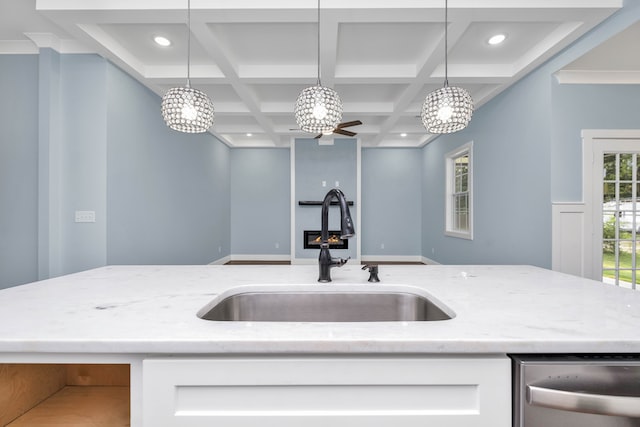
🟪 Illumination
The illumination of a kitchen can be significantly affected by the choice of lighting. The appropriate lighting may increase the brightness, comfort, and functionality of a kitchen while also lowering the likelihood of accidents by enhancing visibility.
🟪 Mood
A lighting color effect and temperature can produce various moods and feelings in a given area. And you can establish a cozy and welcoming ambiance in your kitchen by selecting the appropriate lighting.
🟪 Appeal
A kitchen can feel more hospitable and pleasant with the help of proper lighting, which can also improve the room’s aesthetic appeal. Additionally, it can aid in producing a unified and harmonious design.
🟪 Kitchen size
With the right lighting ideas, a room can appear larger and airier while also giving the impression of greater depth and complexity. In a kitchen, using the right lighting can make the area feel more exquisite, which can be terribly beneficial in smaller kitchens.
🟪 Safety
Good lighting ideas can assist in enhancing visibility in the room, thereby making it easier to locate and explore the kitchen. This can make the area safer and more accessible while also lowering the chance of injuries and accidents.
Things To Consider When Choosing The Best Types Of Kitchen Lighting
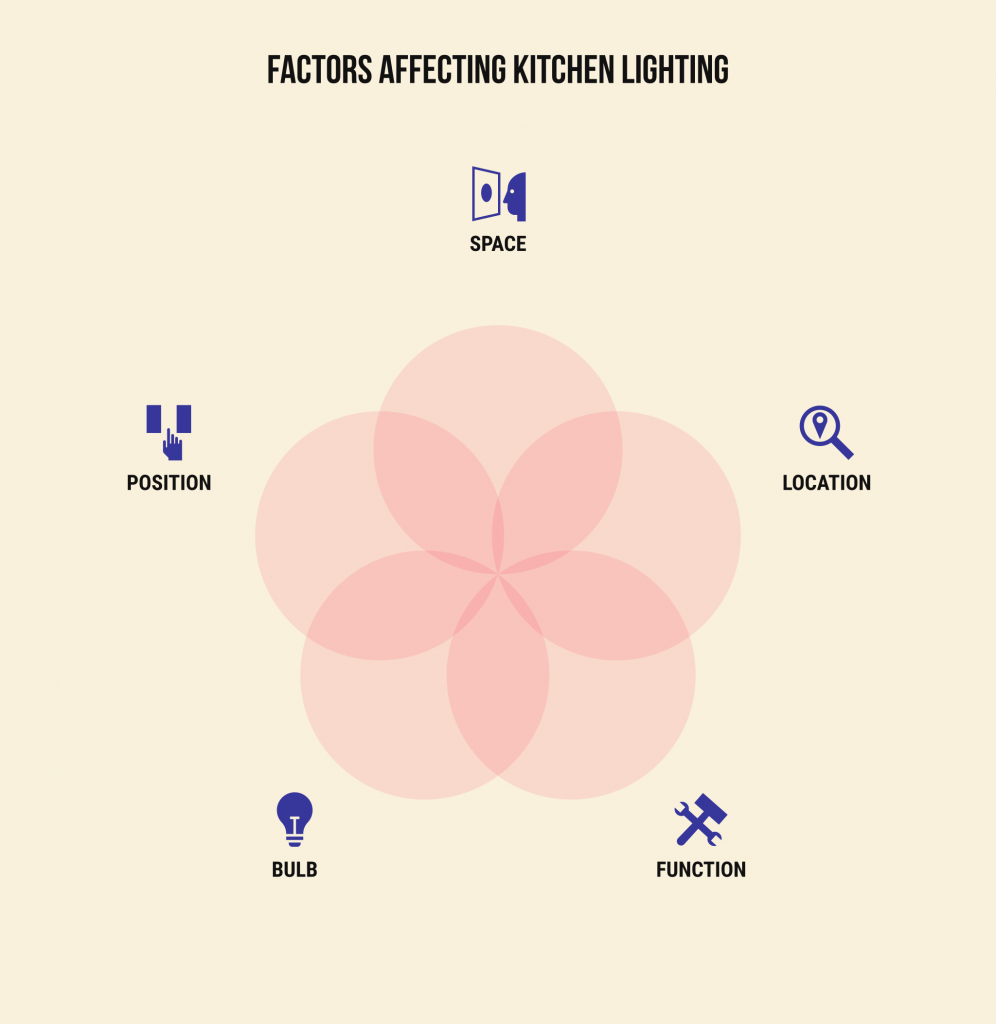
🟪 Space
The size and structure of the kitchen must be taken into account. This is due to the fact that various kitchen size distributions and layouts will need various lighting options in order to offer sufficient illumination and provide a workable and welcoming space. For instance, it could be ideal to use lights in a small kitchen that gives both general radiance and focused, directed light where it is most desired.
To make a larger kitchen well-lit and welcoming, you might want to think about employing many layers of lighting. The height of your kitchen’s ceiling should also be taken into account. This is because it will influence the fixtures you might use and how the light is distributed across the room.
🟪 Location
It is also vital to evaluate the location where you would like to put lights. This is because the position of a kitchen can impact the amount of daylight that is readily accessible. And this can also influence the sort of lighting that is best suitable for the space.
For instance, you might want to utilize brighter, more concentrated lighting to make up for the absence of natural light if your kitchen is situated in a dimly lit, dark location. If your kitchen is situated in a sunny, clear spot, on the other hand, you might want to use cooler, more dispersed lighting to keep the room from feeling too rigid or overwhelming.
Additionally, it is important to consider the location of specific features and appliances in your kitchen, as this will affect the type and placement of lighting fixtures.
🟪 Functionality
Making a kitchen efficient and user-friendly depends heavily on the lighting. It’s crucial to give a kitchen with sufficient, uniform lighting that makes it easy to navigate and work there. While task lights offer targeted, controlled light for particular activities, like cooking or food preparation, general lights for the space are also an option.
Alternatively, you might choose something that will draw attention to a certain design or architectural details of the kitchen, enhancing its aesthetic appeal and depth.
🟪 Alignment
Strategic alignment of lighting fixtures can help to disperse light evenly around the space, producing a well-lit and attractive ambiance. It is vital to position lighting fixtures in a kitchen. This is to ensure that there is even illumination throughout the room and in all areas where you do your kitchen tasks.
To make sure that the fixtures are in a position that delivers the most practical and visually pleasing lighting, it is also necessary to take other components of the kitchen, such as counters and appliances, into consideration.
🟪 Bulb
The type of light bulbs you choose can have a significant impact on the overall look and feel of the space. As well as on the functionality and energy efficiency of the lighting. Each type of bulb has its own unique characteristics and choosing the right one will depend on your specific needs and preferences.
To know what kind of bulb suits your kitchen, check the next section!
Types Of Bulb For Kitchen Lighting
🟪 Compact fluorescent
Compact fluorescent lighting, or CFL lighting, is a popular energy-efficient lighting type that you can use in both home and commercial locations. In a kitchen, CFL lighting may be a suitable choice in a few specific instances. For instance, CFL lighting might be a fantastic option if you’re searching for energy-efficient lighting that will help you cut your energy expenditures.
Additionally, CFL lighting can be a wonderful option if you’re searching for a lighting option that offers a gentle, diffuse light that is comfortable for the eyes. Finally, CFL lighting may be something to think about if you’re looking for a lighting solution that is adaptable and usable in a wide range of situations.
🟪 LED
A reliable and affordable lighting alternative, LED lights are prominent for their energy conservation and long lifespan. In a kitchen, LED lighting may be a wise option for several reasons. First off, LED lights come in a variety of styles and designs. This allows you to select fixtures that blend in with the overall theme of your kitchen. Second, because LED lights use very little energy, they can help you save cash over time by lowering your energy expenses.
Finally, LED lights are a terrific option for task-specific lighting in the kitchen. This is because they are famous for producing bright, clear, and uniformly dispersed light. All things considered, LED lighting can be a flexible and useful solution for illuminating your kitchen.
🟪 Incandescent
Traditional lighting known as incandescent uses a filament to directly produce light. Incandescent lighting is famous for creating a cozy and inviting light that may make a space feel warm and comfortable, even if it is less energy-efficient than other types of lighting, such as LED or CFL.
If you want a lighting option that creates a warm and welcoming atmosphere in the kitchen, incandescent lighting might be a good option. Additionally, incandescent lighting can be a decent choice if you are seeking a budget-friendly lighting alternative, as incandescent bulbs are typically less costly than other types of lighting.
🟪 Halogen
Halogen is a type of incandescent lighting that emits a bright, white light using halogen gas. In a kitchen, halogen lighting could be an excellent choice if you are searching for a lighting option that provides vibrant, centered light that is suitable for duties such as food preparation and cooking. Halogen lighting is also a great pick for its energy conservation, making it a more cost-effective choice than conventional incandescent lighting.
Furthermore, halogen lighting is available in a range of designs and styles, so you can select fixtures that blend in with your kitchen’s overall design. But keep in mind that halogen lamps have a high heat output, which could be problematic in a kitchen setting.
Best Types Of Kitchen Lighting
🟪 Pendants
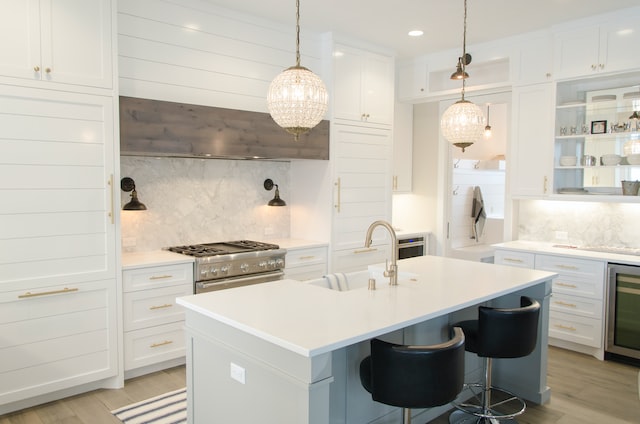
A pendant light is a great choice for the kitchen for several reasons. First, these lights are often adjustable, allowing you to direct light where it is needed most. This can be especially useful in a kitchen, where you may need to light specific areas for cooking or food preparation.
Second, pendant lights are available in a wide range of styles and designs. This way, you can choose fixtures that complement the overall aesthetic of your kitchen.
Finally, pendant lights can be a cost-effective way to provide task-specific lighting in your kitchen. Overall, pendant lights can be a versatile and stylish choice for illuminating your kitchen.
🟪 Ambient lighting
An ambient type of light, also identified as general lighting, is a good option for the kitchen since it provides overarching illumination for the area. This can make the kitchen look more accommodating and comfy. And it can also improve the space’s safety by reducing the chance of accidents. This type of light fixture in a kitchen is often provided via ceiling-mounted lights, such as flush-mount fixtures or sunken lights.
These fixtures can be strategically placed all over the kitchen to create even, dispersed lighting that contributes to making it feel cozy and inviting. A well-lit and usable space can also be made by combining ambient lighting with other types of lighting, such as task or accent lights.
🟪 Under-cabinet lighting
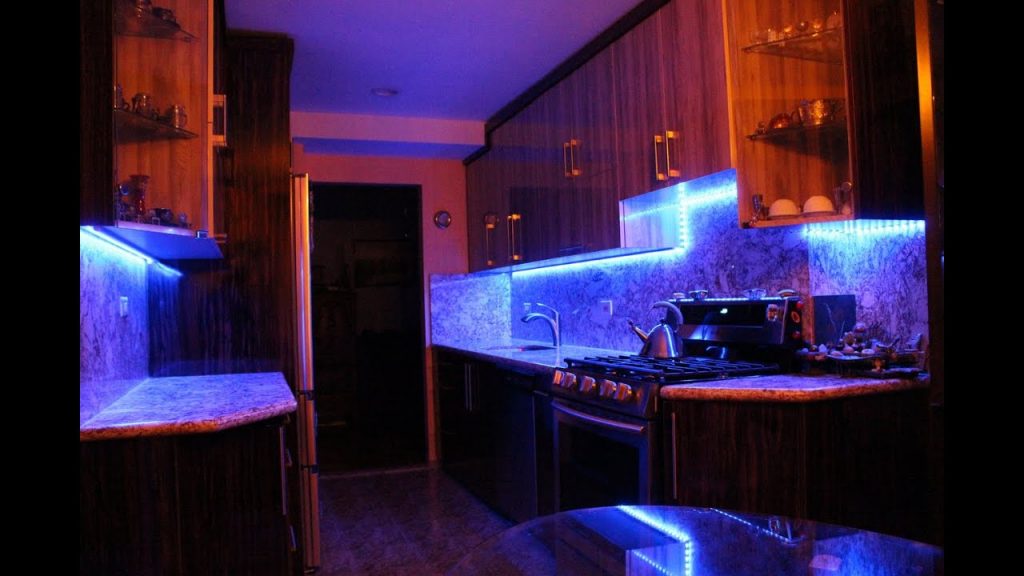
Under-cabinet light is a wise idea for the kitchen. This is because it can provide task-specific brightness that can aid in the ability to see and function properly in the space. As its name suggests, this is located under the kitchen cabinets.
Under-cabinet lighting is normally used to brighten the backsplash and countertop areas, which are vital for food preparation as well as other tasks. In order to offer focused, directed light where it is most required, these lamps can be positioned underneath kitchen cupboards or shelving.
Under-cabinet lights can also be employed in tandem with other types of lighting, such as ambient or pendant lighting, to create a bright and functioning kitchen. You can improve the lighting of your kitchen in a variety of ways, and under-cabinet lights are a flexible and efficient option.
🟪 Recessed lighting
Recessed lighting, also referred to as can lighting or downlighting, is also a great option for the kitchen. This is because it offers a simple, contemporary appearance that can go with many different design aesthetics. These kitchen ceiling lights cast light downward in a diffuse, even manner, which can help a room feel larger and more welcoming.
In a kitchen island, recessed lights can either serve as the ambient that lights up the entire space. Or, you can use these lights in combination with other types of light sources, to create a well-lit and functional kitchen. Recessed light fixtures are also energy-efficient and can aid in energy cost savings.
You can also click here to know how to place recessed lights.
🟪 Task
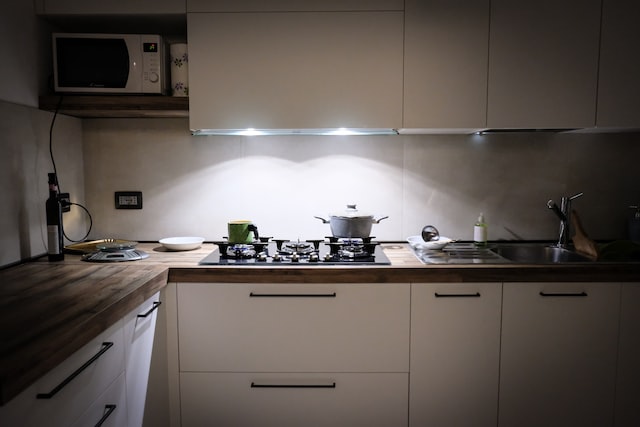
The purpose of task lighting is to provide concentrated, directed light that is perfect for particular tasks or activities. When talking about kitchen lights, this type of light fixture may be a smart alternative in several circumstances. For instance, task lighting can offer the direct, bright light for activities in the kitchen like cooking or food preparation.
Task lighting can also be advantageous in a kitchen that has inadequate overall lighting, as it can give additional luminance in specific areas where you need it. In addition, task lighting can assist in enhancing visibility, making it a good option if you want to design a kitchen that is more workable and user-friendly.
🟪 Accent
Accent lighting is a kind of artificial light that is common to emphasize particular aspects or architectural components of a room. If you want to highlight certain features of the kitchen, such as works of art, plants, or other wall hangings, accent lighting might be a good option.
You can also use accent lights to showcase particular areas of the kitchen, such as a kitchen counter or a backsplash, adding aesthetic value and depth to the space. Additionally, you can use this type of lighting to establish a more enticing and friendly space in the kitchen, making it feel more cozy and appealing. Overall, adding interest and practicality to your kitchen with accent lighting may be a flexible and effective option.
🟪 Decorative
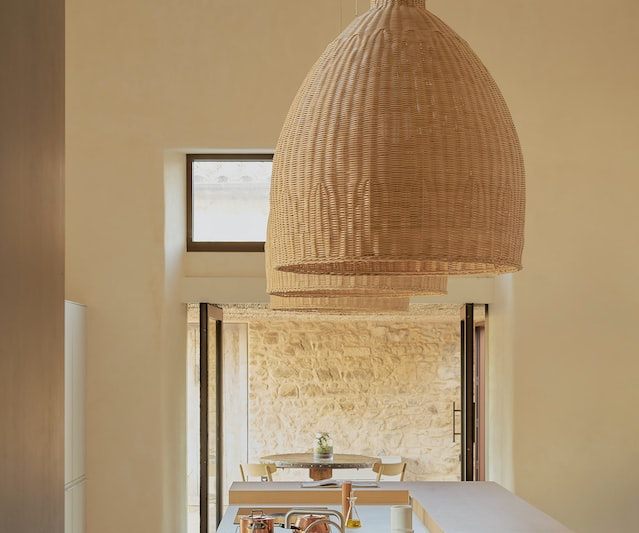
A type of lighting called decorative lighting is widespread more for aesthetic reasons than for practical ones. If you want to add aesthetic appeal and charm to the kitchen, decorative lighting might be a good option. These can be LED strips for a modern kitchen lighting design.
This decor lighting can come in a wide variety of designs. It may include pendants, twinkle lights, and crystal chandeliers, and it has the potential to match the overall aesthetic of your kitchen. Decor lighting can also be used in addition to other types of lighting. Overall, adding this type of lighting to your modern kitchen can be a creative and enjoyable way to improve its appearance.
Final Words
When it comes to selecting the best types of kitchen lighting, there are several aspects to consider. From the shape and arrangement of the room to the type of bulb you choose, the appropriate lighting can make a major impact on the overall feel and appearance of your kitchen.
Whether you are wanting to create a warm and inviting ambiance, increase the operation of the space, or simply improve the entire appearance of your kitchen, choose a light that may help you achieve your goals. By taking into account the factors such as space, placement, features, kitchen design, and the type of bulb, you can decide on the right lighting for your kitchen.
